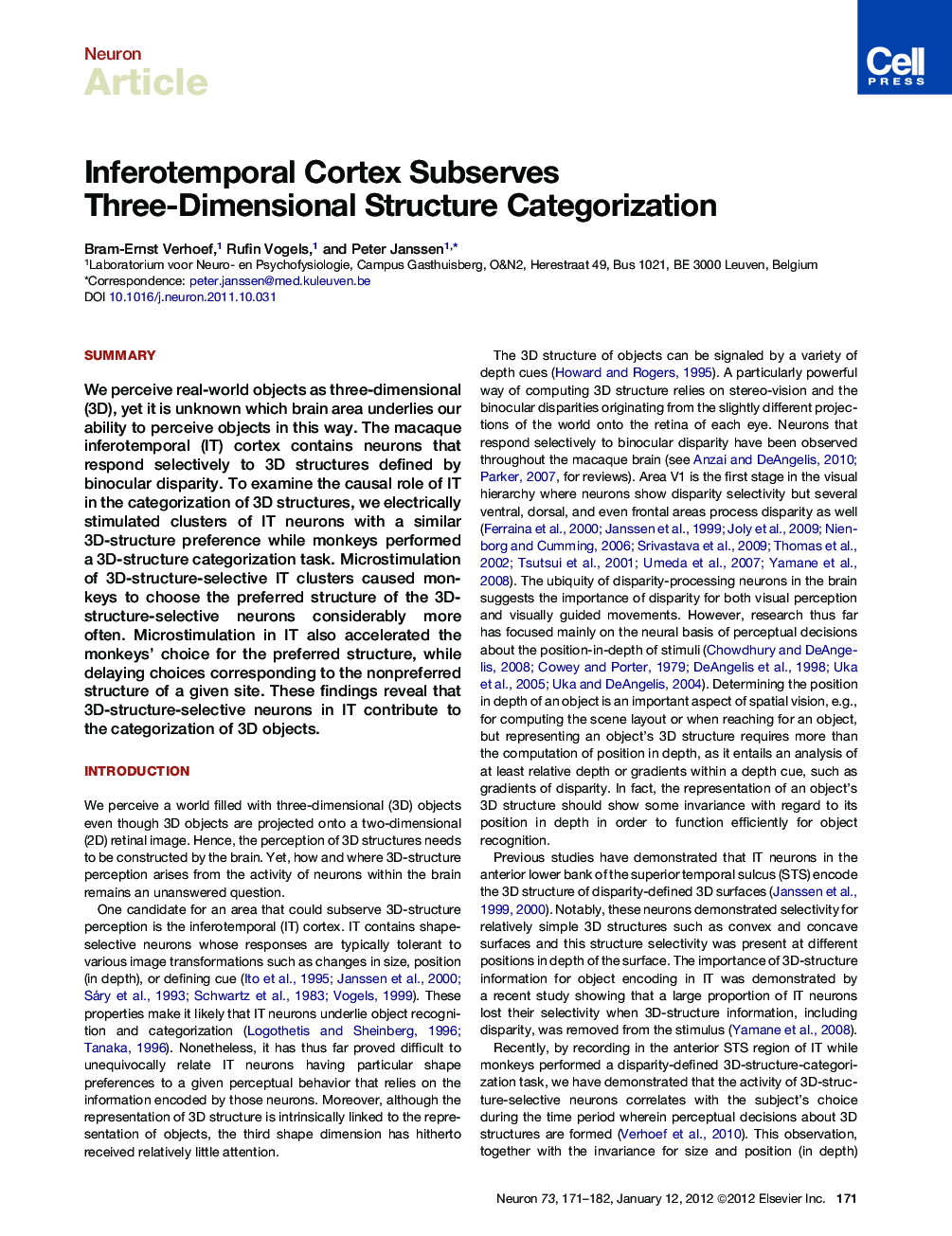| Article ID | Journal | Published Year | Pages | File Type |
|---|---|---|---|---|
| 4321520 | Neuron | 2012 | 12 Pages |
SummaryWe perceive real-world objects as three-dimensional (3D), yet it is unknown which brain area underlies our ability to perceive objects in this way. The macaque inferotemporal (IT) cortex contains neurons that respond selectively to 3D structures defined by binocular disparity. To examine the causal role of IT in the categorization of 3D structures, we electrically stimulated clusters of IT neurons with a similar 3D-structure preference while monkeys performed a 3D-structure categorization task. Microstimulation of 3D-structure-selective IT clusters caused monkeys to choose the preferred structure of the 3D-structure-selective neurons considerably more often. Microstimulation in IT also accelerated the monkeys' choice for the preferred structure, while delaying choices corresponding to the nonpreferred structure of a given site. These findings reveal that 3D-structure-selective neurons in IT contribute to the categorization of 3D objects.
► Stimulation of IT predictably and profoundly influences 3D-structure categorization ► Stimulation caused monkeys to choose the preferred 3D structure of neural clusters ► Stimulation accelerated preferred—but impeded nonpreferred—structure choices ► Evidence for a causal role of IT in 3D-structure categorization
